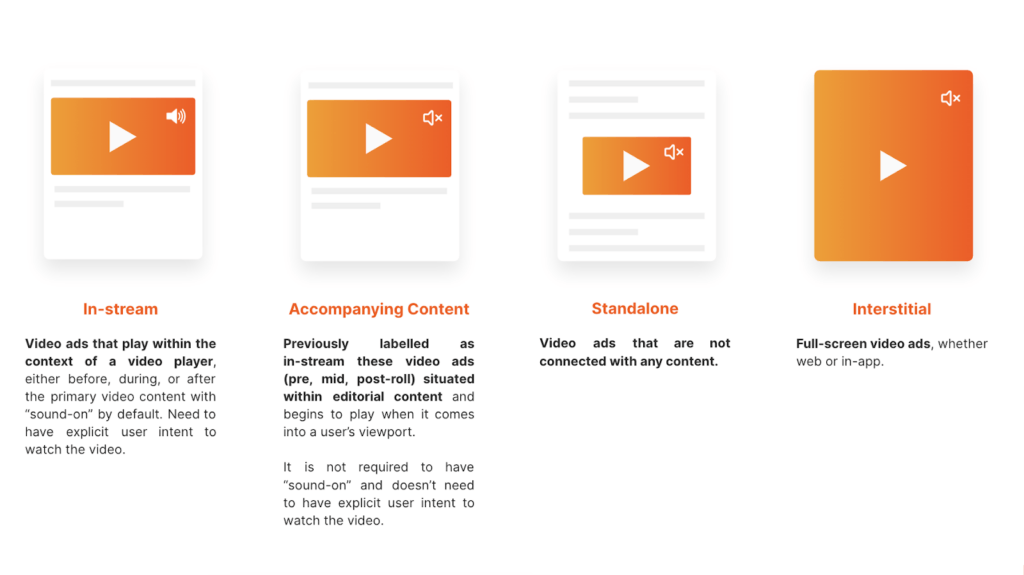
The IAB Tech Lab's revised set of specifications for video ads changed the definitions of in-stream and out-stream ads. Here's what Publishers need to know.
The Interactive Advertising Bureau (IAB) Tech Lab's revised set of specifications for video ads changed the definitions of in-stream and out-stream ads as we know them.
Classifying video ads as pre, mid, and post-roll video is no longer sufficient in order for an ad to be considered as in-stream. In addition, in-stream videos must now be set as "sound on" by default at player start or have explicit clear user intent to watch the video content.
In the IAB's own words, "Once adjusted, less than 10% of web video will remain eligible for in-stream declaration, which would reduce the majority of web video that is currently marked as in-stream."
Qualifying inventory now becomes crucial for publishers in order to maximize video inventory monetization.
Some DSPs, such as DV360, The Trade Desk, and Pubmatic have already announced they will soon stop bidding on inventories that don't use the IAB's new classification. As of today, the shift date of their bidding logic remains undefined. Meanwhile, others will continue to use the old classification for several months, meaning publishers that don't adopt the new changes will lose out on valuable ad revenue.

It's never been more important to properly classify your video inventory. Those who don't risk losing revenue in the coming months due to these new IAB standards.
The first thing you must do is make sure your in-stream inventory is properly flagged. Flagging in-stream video inventory as autoplay "sound on" guarantees it won't be relegated as "accompanying content."
By the end of 2023, we will release a new feature enabling the sending of the requested categorization from DSPs to ensure we send the right signal, at the right moment, to each DSP.
This guarantees publishers will benefit from the maximum monetization of their video inventory regardless of its actual categorization.
